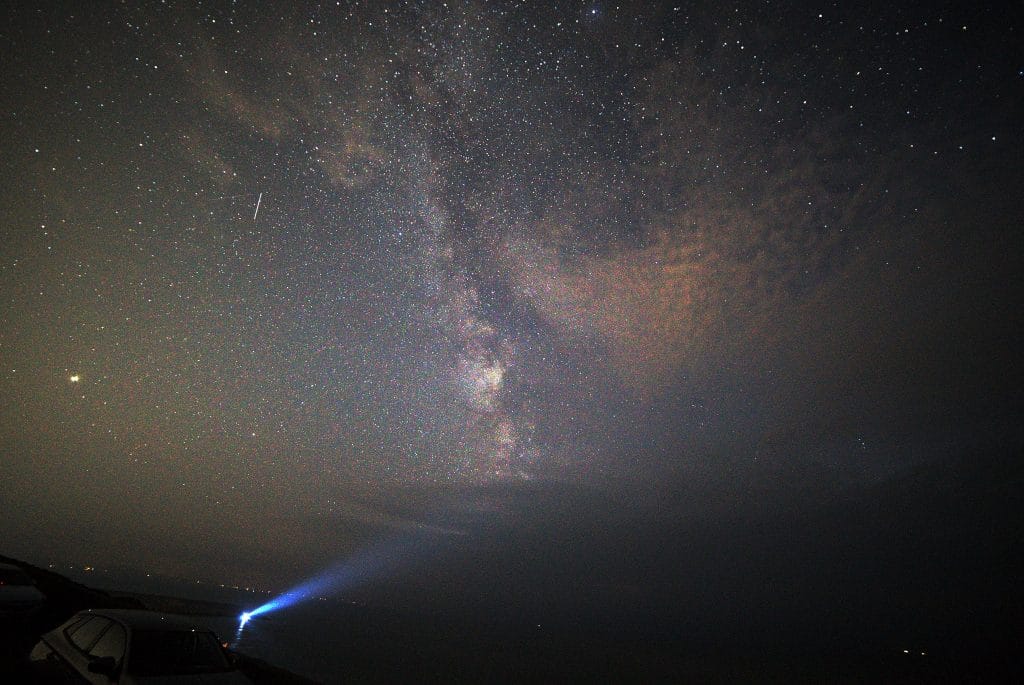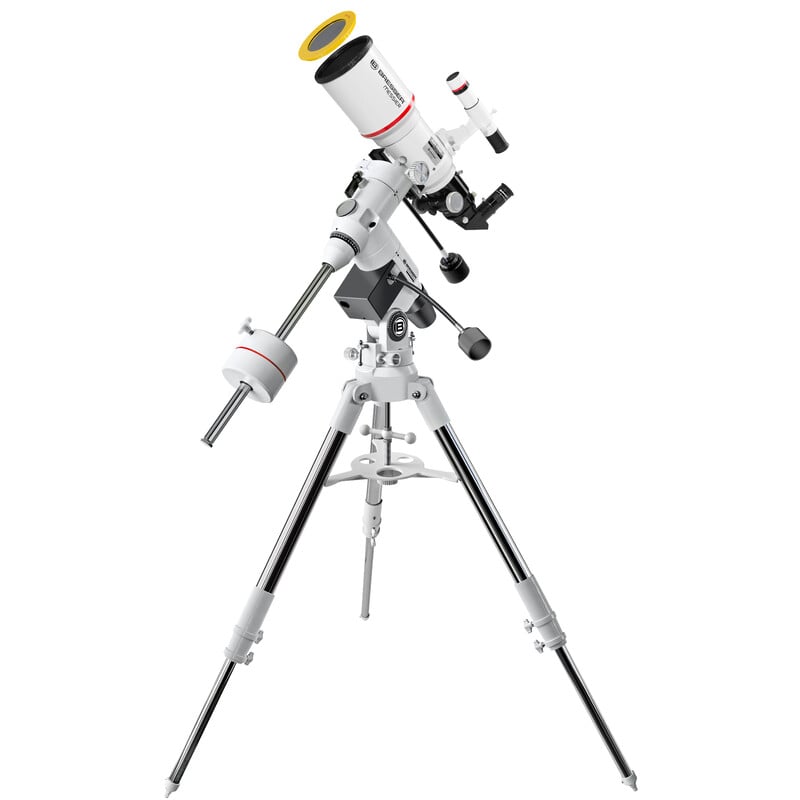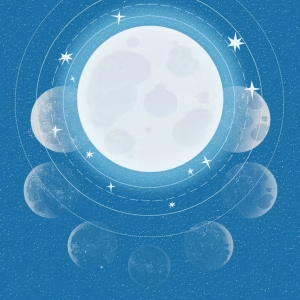Viewing the Milky Way is the most impressive “free show” in the night sky. You can never see the entire spiral galaxy at a glance, it's ~100,000 light years in size but you can see the luminous band full of stars, nebulae and dark dust trails. With the naked eye you experience the grandeur; with a telescope you zoom in on star clusters, emission nebulae and fine contrasts. And yet: what you see is only a fraction of the whole. Under really dark skies, the visible fraction is about a pinprick compared to the hundreds of billions of stars in our disk and halo. This is precisely why it pays to plan smartly, choose good optics and keep realistic expectations.

Can you see the Milky Way with the naked eye?
Yes, under a truly dark sky you can just see the Milky Way without aids. It appears as a luminous band spanning the sky, full of subtle structures and contrasts. In the Netherlands and Belgium, this succeeds only in areas with very little light pollution (Bortle 3 or better). Plan your observation around new moon and let your eyes get used to the darkness for at least 20 minutes.

What you see is only a fraction: with the naked eye, we perceive less than 0.00003% of the stars in our galaxy. Yet the experience is impressive, a sense of scale and connection to the cosmos.
Can you view the Milky Way with binoculars?
Yes, and often binoculars are even the best first step. A 10×50 or 15×70 binoculars shows the Milky Way wide and contrasting. You see:
- Dense fields of stars that appeared hazy to the naked eye.
- Dark fabric bands running like strings through the belt.
- Bright open star clusters such as the Pleiades and the Double Cluster.
What you don't see: details in small nebulae or the core of globular clusters. For that you need a telescope with more aperture.
The advantage of binoculars is simplicity: no setup, no tripod (unless with the heavy 15×70), but an immediate large field of view. For many beginners, this feels more honest and impressive than immediately reaching for a telescope.
Can you view the Milky Way with a telescope?
With a telescope, you don't view the entire galaxy at once, but you zoom in on parts of it:
- Open star clusters such as M11 (Wild Duck Cluster).
- Nebulae such as the Lagoon and Trifid Nebula.
- Globular clusters like M13 in Hercules, in which thousands of stars become visible.
A telescope from 150-200 mm opening shows more detail and contrast, but frankly, a wide field of view remains more important than pure magnification. Therefore, low magnifications (20-50x) and wide eyepieces (25-30 mm) work best.
What you don't see: the spiral arms of the Milky Way, the supermassive black hole or the enormous size of 100,000 light years. Those kinds of structures require professional observatories and space telescopes.
What telescope do you need to view the Milky Way?
For galaxy observation, almost any type of telescope will work, but the experience varies:
- Refractor (70-100 mm): Ideal for high-contrast imaging of star clusters and wide nebulae. Compact and lightweight.
- Newton Dobson (150-200 mm): lots of aperture for a low price, perfect for deep-sky objects in the Milky Way. The Heritage 150/750 is a popular choice.
- Schmidt-Cassegrain: versatile, compact, suitable for those who want to view planets in addition to deep-sky.
Always use a wide field eyepiece and low magnification. For nebulae, a UHC or OIII filter helps.
How do you find the Milky Way in the sky?
The Milky Way is best visible from April to October, peaking in July and August.
Tips:
- To the north: look toward the south, toward the constellation Sagittarius.
- Look for landmarks such as the Summer Triangle (Vega, Deneb, Altair).
- Use a stargazing app such as Stellarium or SkySafari.
- Avoid moonlight - plan around new moon.
What can you really expect when viewing the Milky Way?
Realistic expectation management is crucial:
- Bare eye: a light band, not the colorful pictures you see online.
- Binoculars: more stars, clear dust bands, some bright clusters.
- Telescope: detailed globular clusters, nebular structures and rich star fields.
But you never see the whole galaxy. The galaxy is 946 quadrillion kilometers large (100,000 light years). Even light takes 100,000 years to reach the other side. We always see only fragments.
Fun facts about the galaxy
- Our sun orbits the center of the Milky Way at ~828,000 km/hour; one orbit takes 225 million years. Since its creation, the sun made only ~20 orbits.
- The heart of the galaxy contains Sagittarius A*, a black hole of 4 million solar masses. We don't see it directly, but the stars around it are moving at lightning speed.
- The galaxy continues to grow by gobbling up dwarf galaxies and attracting gas from the cosmic environment.
- We live in the Orion Spur, a quiet tributary arm that was probably favorable for the emergence of life.
Conclusion
Viewing the Milky Way can be done on three levels: with the naked eye for the pure experience, with binoculars for broad and honest detail, and with a telescope for deep objects. Frankly, binoculars are often the best start: simple, impressive and accessible. A telescope adds depth, but requires planning and realistic expectations.
Want to discover which instruments are best for you? Check out our telescope selection aid or start with a 10×50 binoculars as a first step. Ordered before 11:59 p.m., delivered within 48 hours.







